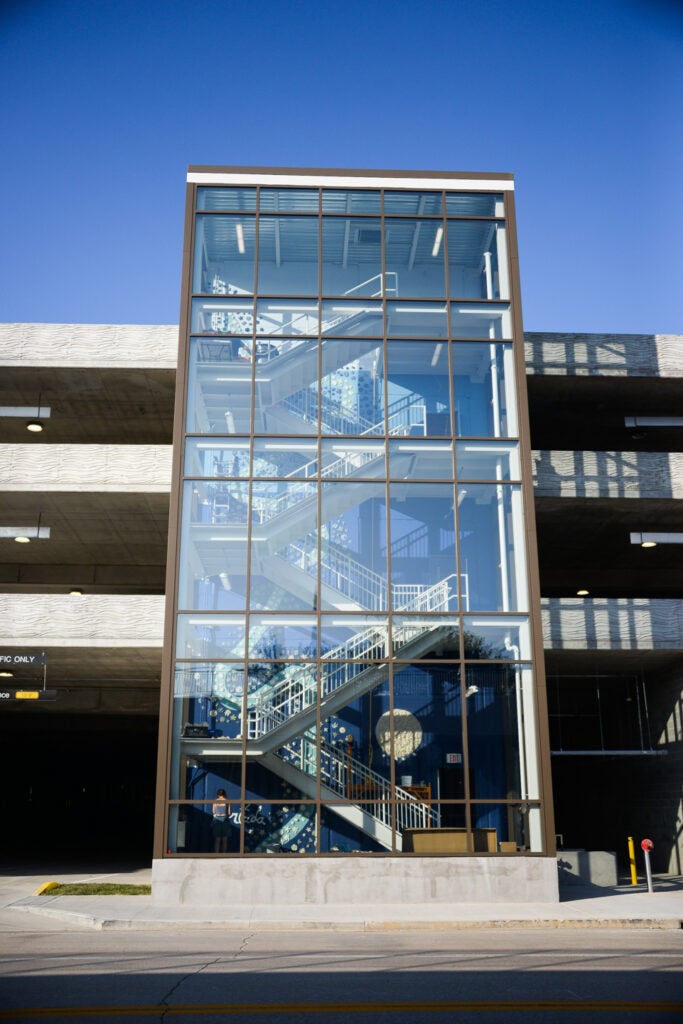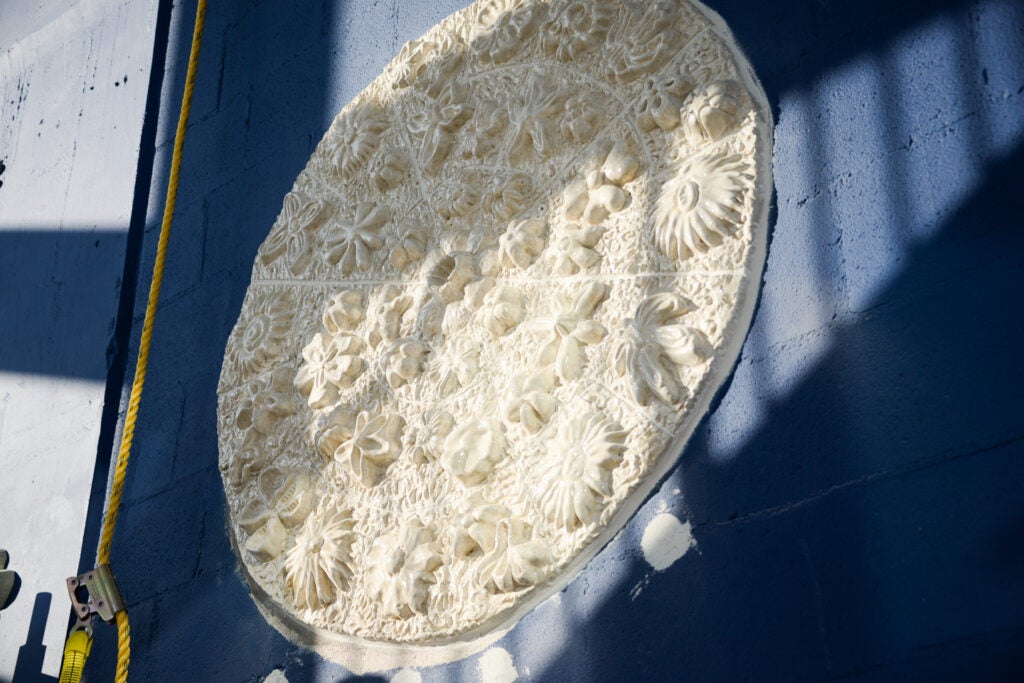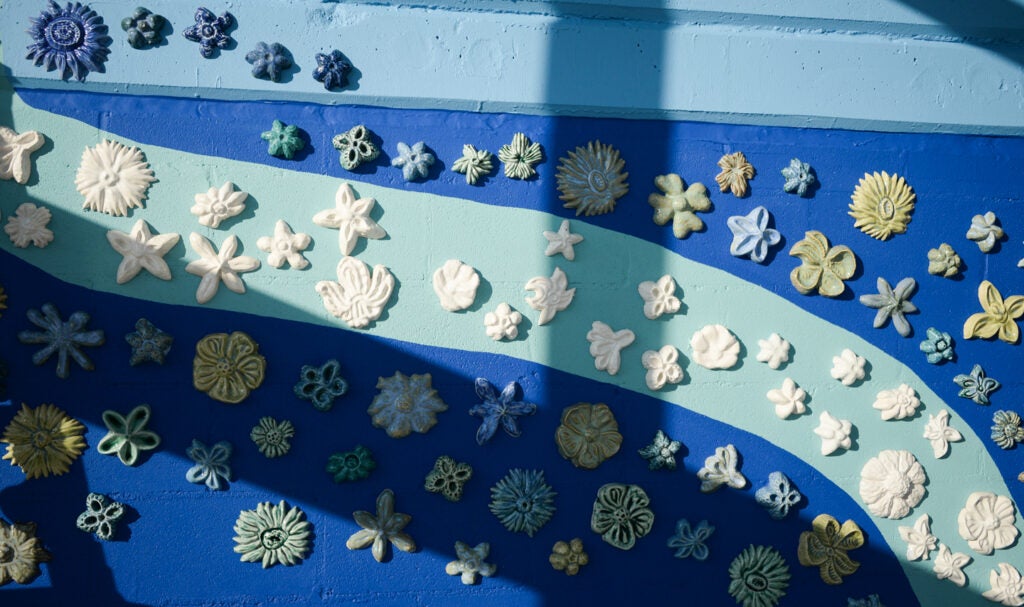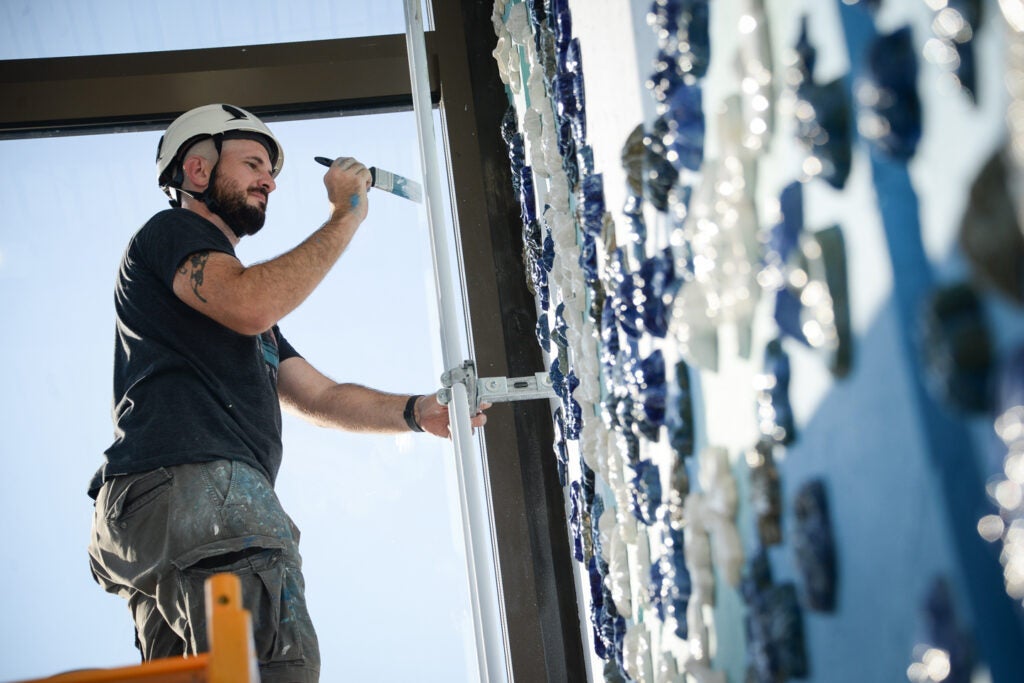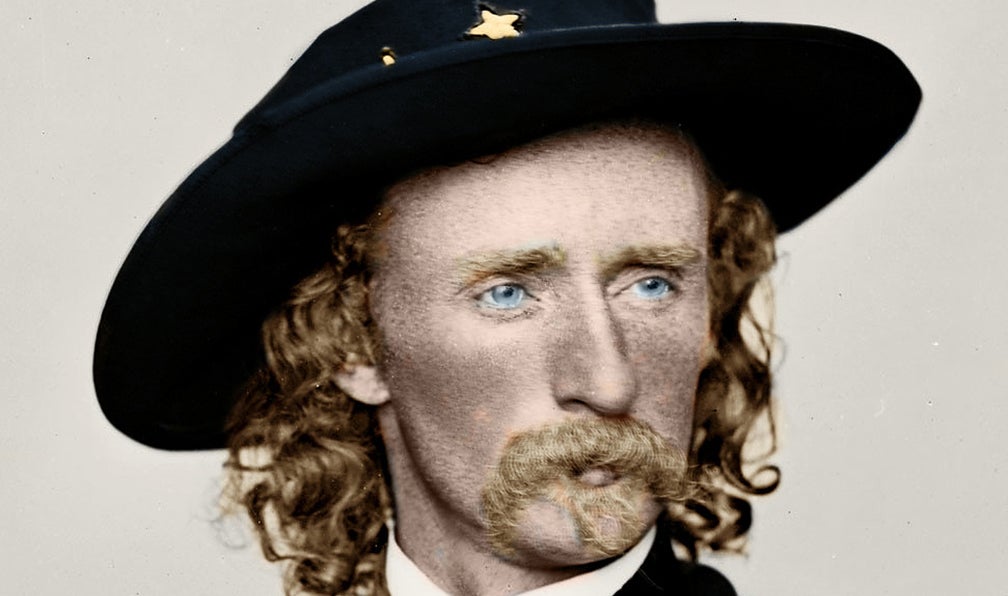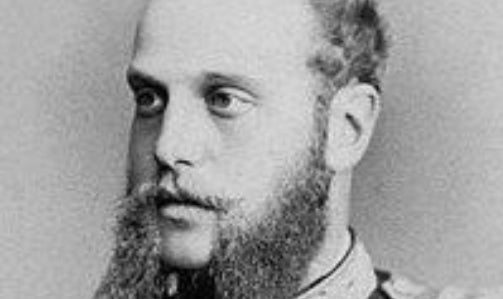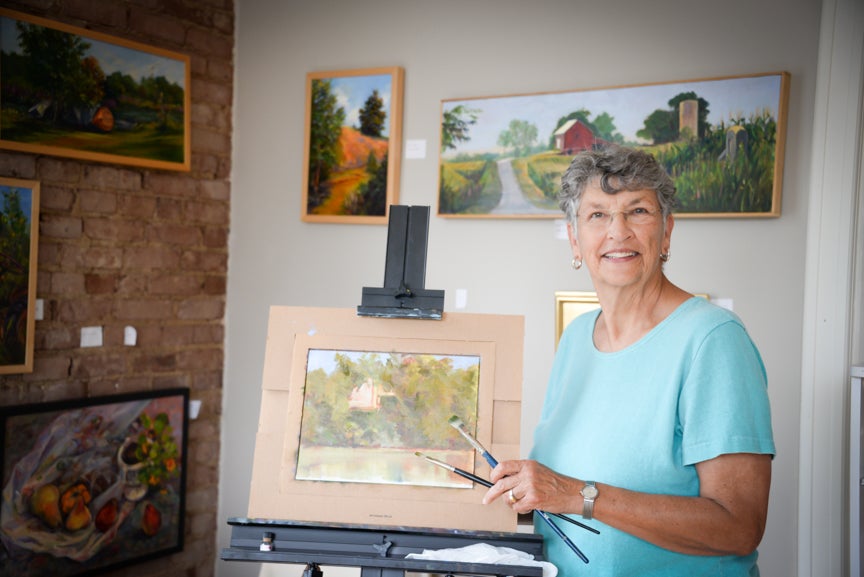Eco-artist Xavier Cortada’s “Floral River” is a 1,200 square-foot mosaic mural located at the new Frankfort Transit Center and parking garage on Clinton Street. Using hand-glazed ceramics and acrylic paint, the artwork re-imagines the Kentucky River as a cascade of wildflowers, connecting the community to the beauty and ecology of the local landscape. “Floral River” has a huge environmental healing and teaching potential in Kentucky’s capital city.
Frankfort artist Carla Phillips, originally from Chicago, didn’t know much about the artist or his art project before receiving an email from Josephine Sculpture Park saying Cortada would be speaking at the Paul Sawyier Public Library on Sept. 3. His presentation was titled “Public Art as a Catalyst for Environmental Dialogue: The Floral River Project and Beyond.”
Cortada believes in the power of public art to spark meaningful community conversations.
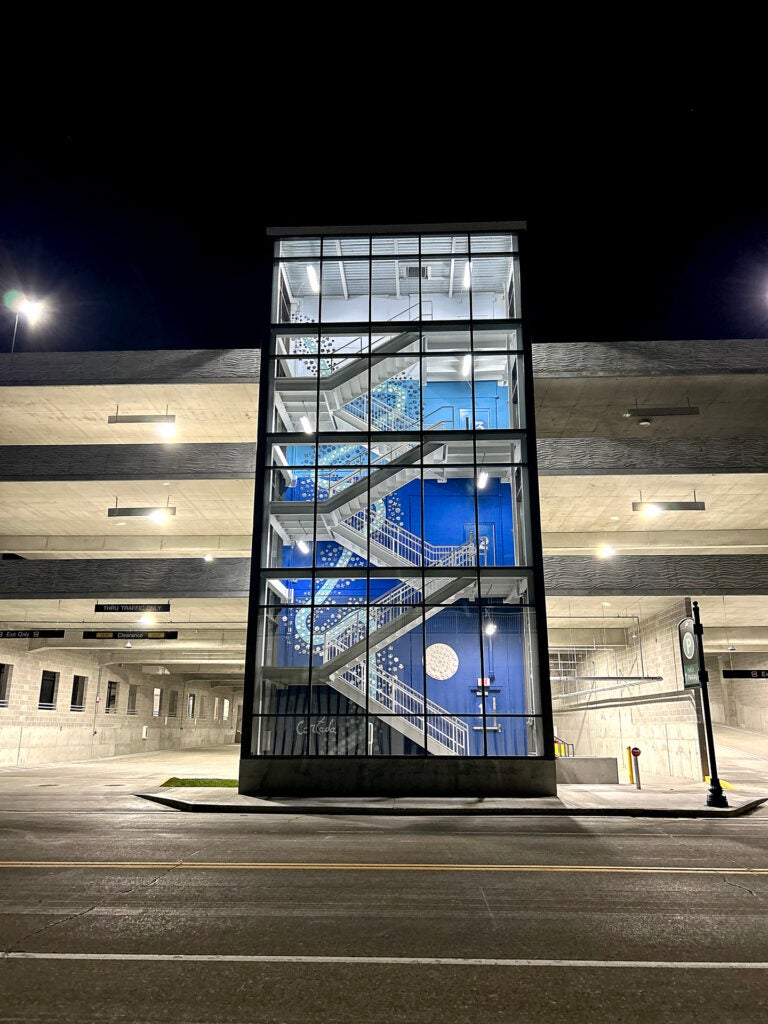
Phillips said she’s glad she didn’t miss his talk. “For me, it was in the realm of a spiritual experience listening to him. In fact, I was moved to tears hearing his multi-faceted biography. I saw as he continued to follow what he was passionate about, there was a synergy that happened where all of his collective life’s experiences came together to enable him to perform what he was best suited or gifted for.
“This type of synergy makes room or opens the doors for us to give of our best selves and function within our community and consequently the world — and for Cortada — even the North and South Poles. I love how from a child he had these sort of creative juices flowing, and he recognized it. He sketched, and his background as a Cuban-American came into play — his parents being immigrants from Cuba.”
Cortada, 60, has a bachelor’s degree in psychology, a master’s in public administration and a law degree, all from the University of Miami, in the city where he grew up.
A Florida Artists Hall of Fame inductee, Cortada raises awareness of critical issues such as climate change, sea level rise and biodiversity loss.
Over his three-decade career, he has created more than 150 public artworks and projects, including installations at the North and South Poles. His collaborations with scientists have earned him recognition, including the 2024 National Academy of Sciences, Engineering, and Medicine’s “Excellence in Science Communication Award.”
“We’re all gifted,” Phillips said. “He’s particularly gifted. I think it’s rare for an artist to have both left brain and right brain balance where he could run a business, be a lawyer, be creative and be an activist in his community.”
Local artists assist Cortada
Reba Rye, a retired art professor at Kentucky State University and part-time employee at Broadway Clay in downtown Frankfort, invited Cortada and his Florida studio manager Michael Gray to stay in her home on Paul Sawyier Drive overlooking the Kentucky River while “Floral River” was being installed.
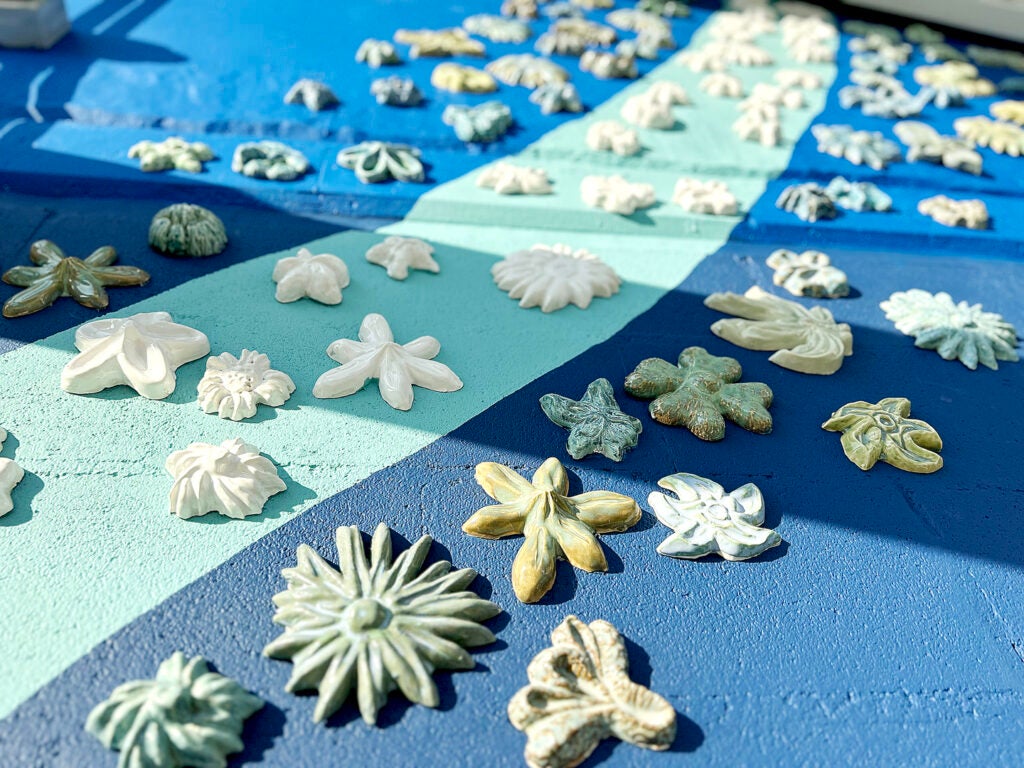
She had heard they wanted two local artists to assist with the installation and Rye recommended Lilianna Fischer, a new artist-in-residence at Broadway Clay, and Matthew Trimble who teaches classes there. “I knew they would both do well,” Rye said.
Fischer, a 2024 graduate of Asbury University in Wilmore who grew up near Columbus, Ohio, loved working on the project.
“It was a really good experience because it was very collaborative,” Fischer said. “I didn’t feel like an assistant where they would tell you what to do and that would be the extent of our interaction. It was like, ‘No, you’re joining the team and we’re going to have lots of conversations about what it means to do this art.’ They were very approachable and friendly guys. They made it a lot of fun.
“They’re also really efficient and they know how they want to get stuff done. It was really good to be in an environment where we could bounce off each other. We could be social, but we were getting things done and thinking deeply about the art.”
Fischer said Cortada is a very thoughtful person who cares deeply about ecology and conservation. He wants his art to have a real practical impact on the community rather than having it just stop with the art piece.
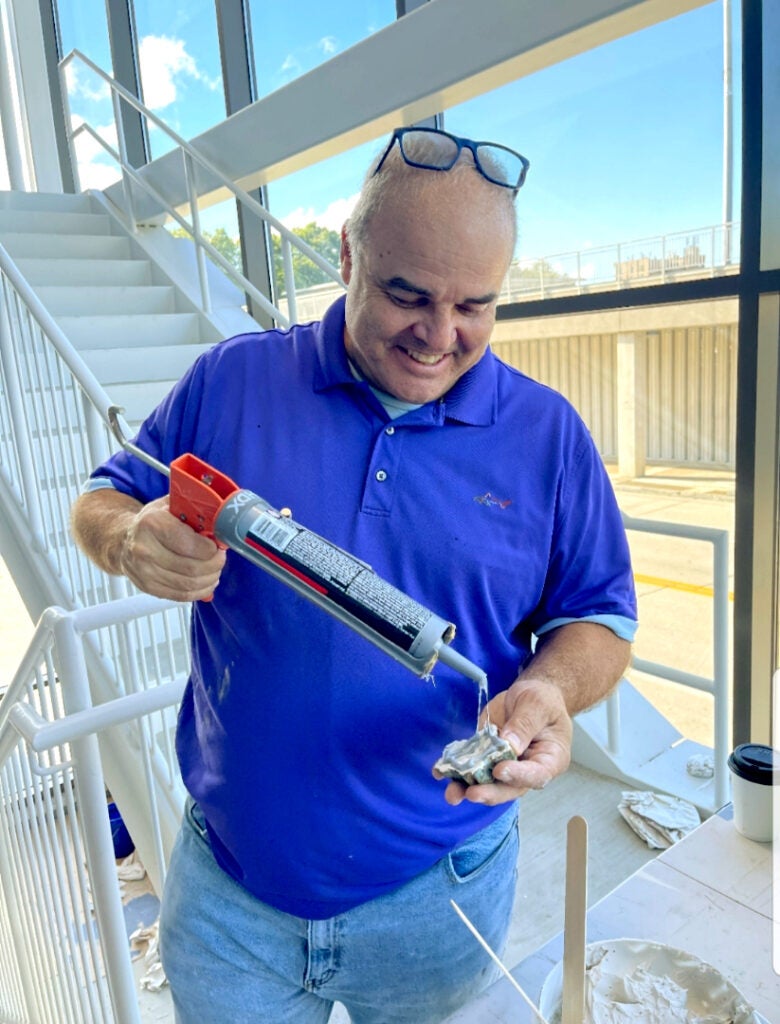
“He’s very generous with his knowledge,” Fischer said. “The whole time we were working together, if I ever had a question, or just wanted to talk about art, public art and making a living, he was always really enthusiastic to help and give advice. He would prompt those conversations, too. It seems like he wants that to be a part of how he does his art, which was really nice for me, a youngster.”
Installing ceramic pieces on sunny days, inside the four-story narrow workspace with a glass exterior wall was like working in a greenhouse,” Fischer said. “The glass and the sun were getting us. It was awesome though, really working hard and getting up a good sweat.”
The ceramic pieces for Floral River were created in Cortada’s art studio in Pinecrest Gardens, “a gorgeous botanical garden,” he said at his library talk. Then he and studio manager Michael Gray transported the carefully packaged art pieces by van, driving 16 hours from Miami to Frankfort, arriving late at night. On Clinton Street, they saw for the first time the large glass case lit at night where “Floral River” would be created. It reminded him of a valuable community “jewel box, and I thought what a beautiful way of framing my art piece.”
Reba Rye said they arrived at her house “really late at night,” and were greeted with a pleasant scent outside. The first question asked when she opened the door was “‘what do we smell?’ They were excited about entering the house with the aroma of chocolate mint, and we sat up talking and drinking bourbon for two hours.”
Rye says “Floral River” is more subtle than other downtown murals, and it’s easy to miss in the daytime “when you’re driving by. Eventually, when more people are congregated down there and walking, they’ll find it and want to go inside. I like the intimacy of it, and that people are going to experience it in a different way.
“It’s a little hard to find. You go through an opening and turn, and there’s a little jewel waiting to be seen. And there’s the artist statement, and a discovery to be made, and I think that’s intentional.”
With “Floral River,” I wanted to create a space where the community of Frankfort could reflect on their connection to nature, particularly the Kentucky River and its surrounding ecosystem. Stretching 1,200- square-feet along the back wall of the new transit center and parking garage, the mural depicts the river as a flowing cascade of native wildflowers. These plants, so vital to pollinators and the health of our environment, symbolize the beauty and resilence of nature amidst the pressures of urbanization and climate change.
My goal for “Floral River” is to do more than simply beautify the cityscape — I hope it encourages active engagement with the environment. Through this artwork, I aim to inspire individuals to plant Kentucky wildflowers in their own spaces, creating habitats for pollinators and fostering a deeper sense of responsibility for our natural world. This piece is closely tied to my Flower Force initiative, which mobilizes communities to take conservation into their own hands by planting native flora. In doing so, it extends beyond the walls of the installation and into the lives of those who experience it.
This mural also has a more personal aim. I hope that the legislators and decision-makers who park in the garage or walk by the mural will take a moment to consider their relationship to the river and the environment. It’s my way of inviting them to think about how their actions affect the world around us — especially in a place as critical to decision-making as Kentucky’s capital. Ultimately, this piece is about fostering unity through nature and encouraging all of us to recognize the power we have to create change.
— Xavier Cortada artist’s statement
People will get to know the bigger picture of Cortada and his extensive environmental work, she said.
At the library, Cortada said, “It’s my first time in Frankfort and I’m in love with this place. It’s beautiful. I’m seeing art, sculptures, murals everywhere. I see historic buildings that were preserved through time. I have no idea who did it, but I thank you.
“I hope I’m giving you a four-story iconic piece that one of you in this room will help activate by making it an engaged art piece, by linking it to a community practice. An engaged art piece is not what happens on that wall or in that glass case, but what happens that is activated by it.”
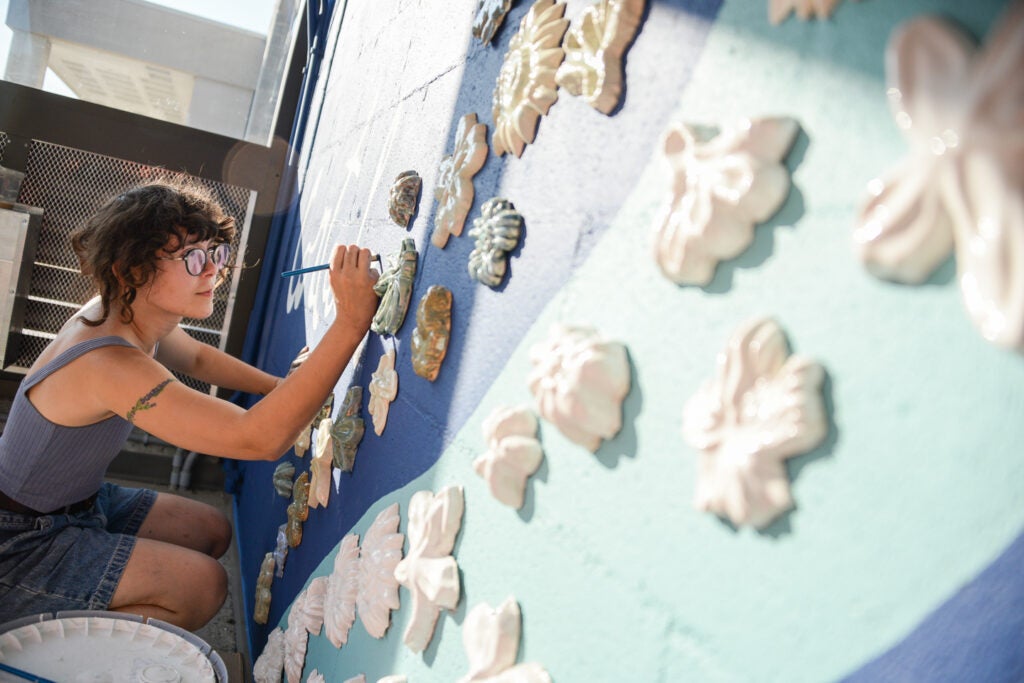
A vertical painting of the winding Kentucky River as it runs through the capital city is depicted on the concrete wall. The top floor wall starts with a white background, and then as you walk down the stairway, the walls have a different shade of blue, and each level gets darker and darker, like the depth of the river.
“I didn’t realize how the color was going to shift and change going up, and that in my opinion makes it come alive,” Rye said.
White wildflowers are placed along the interior of the flowing river, and colorful wildflowers are growing along the river banks.
Cortada says the staircase “is a way for you to dive into your river, but more importantly, a way to dive into environmental activism and environmental stewardship by planting wildflowers. All of you are as important as what we are trying to feature in the glass case. In fact, the only thing that can hurt what’s in the glass case is you.”
The real work doesn’t happen on the wall. It happens on the river and in the community, he said.
Cortada also spoke very highly of the two local artists who helped with the installation.
“They hadn’t had any experience in public art and it was such a great learning experience for them,” he said.
Suzanne Gray, a Frankfort independent art consultant who helped Josephine Sculpture Park manage the art project, said Cortada’s mosaic mural “turned out wonderfully. His work is really good and it’s such a great thing for our community to have work like that.”
Gray said it’s nice that we now have a beautiful rendition of wildflowers and our river, and the artist’s recommendation to extend the art piece to other things in the community like a wildflower garden.
